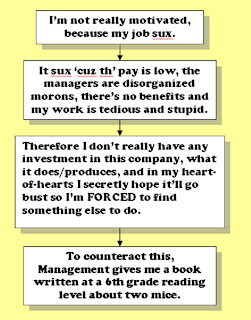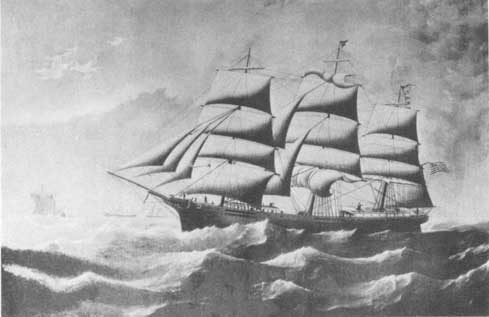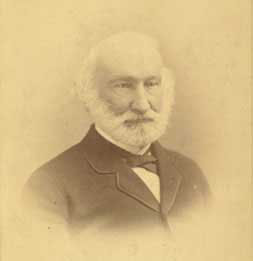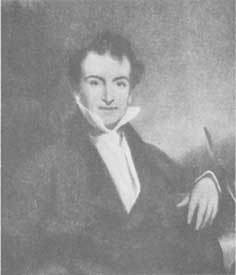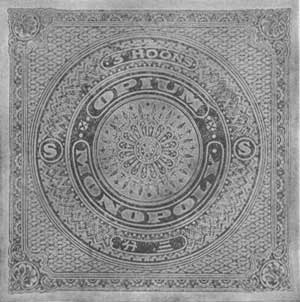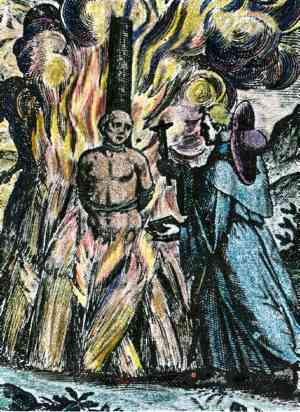Cue David Black's
Acid: The Secret History of LSD. Those still under the impression that history is little more than the sum total of visible events will greet Black's book with incredulity: the synchronistic connections described in just one paragraph can amaze:
"For laundering, [Bill] Hitchcock used the facilities offered by the fiscal paradise of the Bahamas, where he already had a private account at the Castle Bank and Trust. This laundromat [Castle Bank and Trust] for Mafia narcotics trafficking had been co-founded by Edward Halliwell, a CIA asset involved in Air America and Civil Air Transport. These 'airlines' were agency front companies for flying heroin around the Burma Triangle to bankroll covert operations in Indo-China. He made arrangements for the Brotherhood [of Eternal Love, the Californian LSD manufacturing/trafficking organization described in Tendler and May's book of the same name] at Resorts International, a conduit for huge amounts of Mafia money, and at the Fiduciary Trust Company, an offshoot of Investors Overseas Services, headed by the notorious and crooked financier Bernie Cornfeld." (p. 18)

And what about Bernie Cornfeld? Nothing less than sugar daddy to Heidi Fleiss: you can quickly see how this nebulous web of synchronicity starts to add up.
The implications present in Black's book reach to the highest echelons of political power: not only does Black detail the complete history of the CIA's experimentation with LSD in its covert MK-ULTRA project, but we learn that John F. Kennedy's implied mistress, Mary Pinchot, was "turning on" a lot of higher-ups in Washington, D.c. with LSD supplied by Timothy Leary. When Kennedy was assassinated, Pinchot allegedly phoned Leary in a panicked state and said, 'they couldn't control him anymore. He was changing too fast... They've covered everything up." (p. 61). In October 1964, Pinchot was shot to death in a Georgetown apartment in what appeared to be a "professional hit."
The linchpin of Black's book, however, is the "international
man of mystery" Ronald Stark. Stark's involvement with LSD trafficking began in the summer of 1969, when he approached the "hippie mafia" the Brotherhood of Eternal Love with an offer to bankroll their activities:
"In his talks with the Brotherhood, Stark impressed them with his knowledge of scams: smuggling drugs in consignments of Japanese electrical equipment, his use of business fronts in West Africa, and moving money through a maze of shell companies set up by his lawyers on various continents.
However, [Stark] projected himself as interested in a lot more than money. He had a mission, he explained, to use LSD in order to facilitate the overthrow of the political systems of both the capitalist West and communist East by inducing altered states of consciousness in millions of people. Stark did not hide the fact that he was well connected in the world of covert politics. He intimated, for example, that he had contacts with the Tibetan freedom fighters loyal to the Dalai Lama and with the Japanese Mafia who could help smuggle LSD into Tibet and dose the Chinese occupiers... however, the Idylwild hippies could not have possibly guessed that Ron Stark operated on four continents and compartmentalized his international activities so that those he did business with - be they American hippies, Lebanese warlords, corporate lawyers, British scientists, Japanese Mafioso or Italian train-bombers - would have little knowledge of his 'other' activities. He could speak ten languages fluently and had the 'bottle' [of LSD], cunning, charm, and knowledge to pass himself off in various situations as a businessman, chemist, doctor, art collector, drug dealer, political activist and even as a Palestinian guerilla." (p. 20-21)
 Ronald Stark
Ronald StarkOne of the most interesting sections of the book details Stark's involvement with the "acid gang" responsible for the production of most of the UK's LSD during the 1970's. "Operation Julie" eventually brought the gang down, but the story behind this operation is interesting in its own right. Of all of the characters in Black's book, only the "Julie" chemists Richard Kemp and Christine Bott are as intriguing as Stark: Kemp, once described as a "one in a million brainiac" by a fellow prison inmate, was a Cambridge-educated chemist and left-wing radical who hoped that LSD would inspire societal revolution. Kemp and Bott believed "...industrial society will collapse when the oil runs out and that the answer is to change people's mindsets using acid. They believe LSD can help people to see that a return to a natural society based on self-sufficiency is the only way to save themselves." Kemp was also responsible for a dramatic breakthrough in LSD manufacture, which was responsible for the "Julie" acid being the cleanest and strongest ever seen on a large scale in the UK.
 Kemp and Bott
Kemp and Bott
(taken from Lee & Pratt's Operation Julie)The web of synchronicity deepens yet again when Kemp's association with the famed DNA co-discoverer Francis Crick is revealed:
"Dick Kemp told me he met Francis Crick at Cambridge. Crick had told him that some Cambridge academics used LSD in tiny amounts as a thinking tool, to liberate them from preconceptions and let their genius wander freely to new ideas. Crick told him he had perceived the double-helix shape while on LSD."
It was clear that Dick Kemp was highly impressed and probably bowled over by what Crick had told him. He told me that if a man like Crick, who had gone to the heart of human existence, had used LSD, then it was worth using. Crick was certainly Dick Kemp's inspiration."Like Kemp, Stark remains an enigmatic figure throughout the book, and we never get much more than speculation as to who he actually is. Was he a CIA asset? Scion of an ultra-wealthy family? Between Stark's connections to radical groups on four continents (a mind-boggling list that includes the Weather Underground and the IRA) it is difficult to imagine that Stark was not an intelligence asset of some sort: he appeared to operate above the law. At the same time, he evidently exhibited some fuzzy political sympathies that definitely leaned in the direction of "One World Universalism." Stark's apparent tendency to latch on to "convenient" causes is all too indicative of someone operating as an agent of an Illuminati-type organization: if he did have a political agenda, it was certainly a bit more obtuse and sophisticated than anything revolving around simple "national liberation". Black also infers that Stark maintained connections to the P-2 Masonic Lodge in Italy, but the extent of his involvement is not clear.
Perhaps Stark's political orientation can be distilled from one of his few known influences: Robert Heinlein's
The Moon Is A Harsh Mistress:
"He saw it as a revolutionary 'handbook', every bit as inspirational as the writings of Che Guevara. Heinlein's novel, a hard-boiled political fairytale set in the year 2075, is about a penal colony on the Moon. The million inhabitants - who are housed in huge domes containing artificial atmospheres - are either Earth deportees or their descendents. They cannot return because once their bodies adapt to the Moon's gravity they can never readapt to the gravity of Earth. This lunar prison is brutally administered by a United Nations-appointed governor, who the revolutionaries try to overthrow. One of them, a character called 'the Prof', explains:
...revolutions are not won by enlisting the masses. Revolution is a science for the few who are competent to practice it. It depends on correct organisation and above all, on communications.'
The conspiracy starts with three people... these three in turn recruit two other people to form three new cells. This recruitment process continues until a large network of cells is built up. The advantage of the structure is that if cell members do not know each other's sub-cells, then they cannot give them away if captured. The drawback is that if a single cadre is arrested and cannot resist interrogation, then the enemy can arrest the half-a-dozen comrades he or she knows and thus reach the sub-cells. This, it becomes possible for the authorities to break the revolutionaries' chain of command and communications.
A more sophisticated system discussed in Heinlein's book is a pyramid-of-pyramids setup - a sort of 'Internet' without the computers:
'Where vertices are common, each bloke knows one in an an adjoining cell... Communications never break down because they run sideways as well as up and down. Something like a neural net.'
Damage can be stemmed and repaired because the cell member who discovers a breach in the network can pass warnings without having to know who receives the messages.
The notion of revolutionary organisation as an imitation of a 'natural' and 'organic' hierarchy is not new. Historically, August Blanqui, the most accomplished revolutionary conspirator in 19th century France, had very similar ideas about revolutionary organisation. In Heinlein's futuristic vision, however, the notion is given a neat twist: the conspiracy is helped by a miraculous super-computer, which is so powerful and complex that it 'wakes up' and becomes 'self-conscious'. The computer develops a sense of 'humour' about the 'stupidity' of the colonial administration, plus a 'rational will' to overthrow them.
The conspirators use the computer to set up front companies and fraudulently appropriate funds on the terrestrial stock exchanges. They then use the money to set up secret facilities for development of revolutionary war technology. In this scenario, then Big Brother's Brain, a scientific rationality, can be detached from ruling class control and harnessed to the revolution.
As a 'rational anarchist', the Prof believes that the concept of the State has no existence except as 'physicall exemplified in the acts of self-responsible individuals.' This implies that collaboration with the state is justifiable as a disguise within the strategy of systematic deception of everyone apart from those who are required to be 'in the know' for particular functions.
Stark's keen interest in these ideas is perhaps a pointer to his modus operandi. And if he really did think of himself as a revolutionary who could make use of state agencies and capitalist technology on his own terms, he was not unique in the history of politics. In the 1840's, Pierre Proudhon, a founding father of French socialism (and opponent of Blanqui), dismissed the problem of secret police spies and provocateurs in his movement. Such actions, he claimed, were 'irrelevant' to someone such as himself: a 'new man... whose style is not the barricades but discussion, a man who could sit at a table with the chief of police each evening and take all the spies in the world into his confidence.'
In Ron Stark's case, operating very much in the 20th century, political activism went far beyond discussion. Whilst he could sit at all sorts of tables, he had a certain liking for barricades as well.' (p. 149-151)
In a more base sense, the highly intelligent Stark was probably just
having quite a bit of fun: between leading his jet set lifestyle (which included a Manhattan apartment replete with original Picasso paintings), setting up front companies to facilitate the manufacture of LSD, and inhabiting a social milieu replete with the most colorful "characters" that one could imagine, his life was certainly worthy of fiction. Stark was clearly motivated by profit, but if he could justify his actions with idealism, then all the better. Idealism mixed with lucre finds its most potent expression in the drug ideologue: yes, he's helping people find God, but he's also a capitalist.
In close, Black's book comes with my highest recommendation: not only is the subject matter fascinating, but it's a first-rate piece of journalism. What follows is Black's own synopsis of the book from Lobster Magazine:
-~-~-~-~-~-~-
Operation Julie revisited: the strange career of Ron Stark, parapolitical alchemist
David BlackOperation Julie, a nation-wide police investigation of LSD production, was launched in 1976. Two years later, although some 60 members of the British 'microdot conspiracy' had been convicted, Detective Inspector
Dick 'Leapy' Lee was dissatisfied. The operational commander of 'Julie', Lee was interested in the international connections of the network, but was blocked from probing them by the powers-that-be. One major player he was especially interested in, New Yorker Ronald Stark, was suspected of having CIA connections.
Ron Stark (1938-84) was first convicted in 1962 for making a false job application for government service and imprisoned for parole violation. Between 1967, when his net wealth was recorded as $3000, and 1968, Stark somehow became a millionaire and moved to a flash residence in Greenwich Village. To some he claimed he to be the scion of the super-rich Whitney family; to others he was the son of a rich bi-chemist. Stark spoke of having studied biochemistry at various Ivy League universities and of having quit a top secret post at the Department of Defense during the Kennedy administration because the work 'disgusted' him. One scientist who knew Stark says he claimed to have been attached to the CIA 'mind control' project - later revealed as MKULTRA.(1)
The Brotherhood of Eternal LoveStark had world-wide business interests in pharmaceuticals. Behind his various 'legit' fronts, by 1969 he had become one of the world's leading suppliers of LSD, produced at his illicit labs in Europe. Stark also plugged himself into the counter-culture. In America he hooked up with the Brotherhood of Eternal Love (BEL), a Californian motorcycle gang who had transformed themselves, under the influence of LSD and the inspiration of Timothy Leary, into a registered 'church'. By 1969, the BEL had a sizeable share of the market for a less godly, but hugely lucrative business, LSD and marijuana.(2)
The BEL were short of materials and the capital investment needed to continue LSD production,when, in August 1969, Ron Stark visited their commune with a large bottle of pure liquid LSD, enough for up to ten million trips, and explained that he needed a secure outlet in the US for the LSD he was producing in Europe. He also declared his intention of facilitating the overthrow of both Western capitalism and Eastern Communism by inducing altered states of consciousness in millions of people and claimed that he had a contact with the Dalai Lama's Tibetan freedom fighters and could get the Japanese mafia to smuggle LSD to dose the Chinese occupiers.(3)
The authors of
Acid Dreams, Martin and Lee and Bruce Shlain, note that Ron Stark's 'fateful appearance at the Idylwild ranch', coincided with certain 'unpleasant changes'. Some of the old guard had to 'retire' after skirmishes with the law, notably Stanley Owsley, the maker of 'Orange Sunshine', his protg, Tim Skully (who had originally wanted to give acid away free), and superbrat, Bill Mellon-Hitchcock, the BEL's money-launderer. Not long after Stark turned up, BEL founder, 'Farmer John' Griggs died of poisoning in circumstances his friends regarded as suspicious.(4)
Stark in BritainBefore clinching the deal with the BEL, Stark had been making some contacts in England among the radical psychiatry movement of R.D. Laing and the Tavistock Institute. One of these was David Solomon, an American researcher and writer on LSD and cannabis. Solomon had been working with Richard Kemp, a drop-out science student, and his partner, Dr. Christine Bott, to synthesize some powerful liquid cannabis. Solomon had also obtained a supply of the LSD base, ergotamine tartrate, for a shot at LSD production, and Kemp managed to make some at a makeshift lab in Liverpool.
Shortly after meeting Stark in Cambridge in Summer 1969, Solomon invited Kemp to come meet 'a
man with a million dollar inheritance'. Stark convened a meeting at the Oxford and Cambridge Club on London's Pall Mall with Kemp, Simon Walton, Stark's Scots assistant, plus Solomon and his friend Paul Arnaboldi (then famous as 'Captain Bounty' in the TV chocolate ad). The Great British LSD Plot was thus hatched within weeks of Stark's first meeting with the Brotherhood in California. Stark also introduced Kemp to the Brotherhood's chemists, Nick Sand and Lester Freidman. Kemp was soon working wonders at Stark's lab in Paris and in the first run turned out a kilo of LSD.(5)
In May 1970 Kemp and Stark, with the BEL's chemists, held talks lasting four days on the future of the 'Atlantic Brotherhood'. Kemp was unhappy. He had been assigned to work on a new project to synthesize THC to make a new brand of liquid cannabis as strong as LSD and as cheap to produce. But money promised was not forthcoming, Stark discouraged visits by Kemp's partner Christine Bott, and Kemp felt 'sexually harassed' by the bi-sexual Stark. Worse, Kemp had been pulled up by British Customs during a trip with Walton from France in Stark's Ferrari to buy equipment. During a search of the car, the Customs had found documentation of a massive purchase of the LSD base, ergotamine tartrate, but failed to see its significance.(6)
When Stark moved his laboratory from Paris to Orleans, he claimed he had been warned about an impending raid on the lab when, 'by chance', he ran into an old pal who worked with the CIA station in London. By this time Kemp had had enough and decided to quit working with Stark. He returned to England in late 1970 and teamed up with Henry Todd, an accountant recruited by David Solomon. In mid-1971, as production began in Britain and the distribution network was being set up, Stark crossed the Channel in one last attempt to dissuade Kemp from branching out independently.(7)
When differences between the 'idealist' Kemp and the 'bread-head' Todd became unresolvable - Todd wanted to dilute the elixir to boost profts - it was decided to split into two independent networks. Todd centred his operation on the Thames Valley, while Kemp and Christine Bott moved out of London to North Wales and set up a lab with Paul Arnaboldi at Plas Llysin near Carno.(8) Amazingly, for the first half of the seventies, the British Acid Underground - thanks to to Stark's role as catalyst - happily churned out hundreds of millions of tabs to satisfied customers, without anyone in authority realising how big the business had become.
The BEL scattersFollowing a series of raids on the BEL in America, by early 1973 the authorities estimated that some 20 members were in hiding or in exile - including Stark. Timothy Leary ended up in Afghanistan, after fleeing the US, but the US Embassy evidently knew he was coming and got the Afghan authorities to deport him back to the USA. Ron Stark visited Afghanistan at least once with a plan to set up BEL facilities for making hallucinogenic THC derivative from Afghan hash oil. Thanks to Kemp's efforts, Stark had worked out the first eight of the fourteen stages of the THC synthesis. Stark had a minister of the Afghan regime in his pocket to set up a penicillin factory as a front, and a 'contact' with the US embassy: the BEL's chief hash supplier in Kabul, Aman Tokhi, worked there as a 'maintenance supervisor'.(9)
Stark had taken over Bill Mellon-Hitchock's role in the BEL of money-launderer and procurer of LSD production materials. In 1972 Stark's lawyer in Paris, Sam Goekjian, who had drawn up the charters for Stark's front companies, was investigated by IRS agents and asked about Stark's BEL connections. The DEA, who had just rolled-up much of the BEL network in the US, organised a follow-up raid on Stark's Belgian laboratory on the campus of Louvain le Neuve, near Brussels, but Stark escaped, spiriting away the BEL's investments for his own purposes.(10)
An Inspector Lee callsIn November 1974 Inspector 'Leapy' Lee,(11) who had been running Operation STUFF (Stop Unlawful Free Festivals) in Thames Valley, began to have doubts about the official view on LSD use. According to the Home Office, annual seizures of 20,000 tabs means that 'the use of LSD in Britain was restricted to a small number of people'. Lee approached the Central Drugs Intelligence Unit (CDIU), who 'denied having any information which showed LSD to be a problem'. It would take Lee another three years to fully discover that 'since 1970 an illicit organization had been manufacturing around 20,000,000 tiny LSD tablets [a year] and selling them to two-thirds of the world'.(12)
After his arrest in 1977, Richard Kemp insisted that all of the links between the British networks and the BEL had been broken in 1970. 'Leapy' Lee, however, knew that Ron Stark had passed through London in Spring 1973 while on the run from US authorities and had obtained a false passport here.(13) Lee wanted to find out more but was blocked from on
high; possibly, he suspected, to prevent questions arising as to why action hadn't been taken years earlier. He had learned that the Home Office drugs inspectorate had submitted a report as early as 1971 which noted the exports of tartrate to America from Britain and furthermore suggested that LSD microdots seized across the world 'originated from one common source which, in all probability, was somewhere in Britain.'
First hints of the Welsh connectionIn Spring 1975, when evidence began to point towards an LSD supply source in Wales, Lee learned that the Central Drugs Intelligence Unit had been withholding information from him on 'a number of leads pointing to an LSD conspiracy in the United Kingdom....the information had been withheld from all drug squads except the Metropolitan.' Lee learned that a year previously Dectective Inspectors Godfrey and O'Hanlon of the CDIU had travelled to Canada to hear Kemp's former tableteer, Gerry Thomas, name Kemp, Bott and Solomon as LSD con-spirators. On returning, O'Hanlon was suspended and subsequently sentenced to eight years imprisonment for corruption. D.I. Godfrey did initiate an investigation of a trip by Solomon to Switzerland to meet Leary; but, in Lee's words, the Met then 'botched' a raid on Solomon's London home and missed some documents he had concerning Leary's secret negotiations over a contract for his book On the Run. Godfrey and CDIU lost track of Richard Kemp and Christine Bott.(14)
Lee discovered that an investigation as far back as 1971 had been getting near the truth but had collapsed when the gang under surveillance by the Thames Valley Squad and Customs were robbed of money and drugs by officers of the Met.! According to Detective Constable Martyn Pritchard of the Julie squad, the 1971 investigation did reveal enough to register suspicions 'that a big LSD factory was in business.'(15)
Cue the spooksThat the security services regarded LSD as an issue of 'national security' was confirmed when Lee began to follow leads on Ron Stark and discovered that the security services had been on the trail before him. When Lee went to see the security services about the loan of some
high-tech surveillance equipment, he briefed them on 'the suspected international level of LSD trafficking and, more particularly, the probable involvement of terrorist groups like Baader-Meinhof and the Angry Brigade'. Lee had noticed that the network he was investigating had 'a cell-like structure similar to that used by terrorist groups'. Lee was referring to the system of pre-arranged meetings places and dead letter-box drops in tins buried under trees to deliver the LSD to the distributors and collect payment.(16)
Lee had begun to suspect terrorist connections when, during surveillance of the Let-It-Be Commune in Wiltshire, a car used by a dealer suspected of working for the LSD network turned out to have been 'linked' in some (unspecified) way to the West German Red Army faction. A check on an associate of the distribution network in Wales showed him to be 'an associate of the Angry Brigade'. Although none of those arrested in Operation Julie were charged with political offences, the supposed 'terrorist connection' did emerge in the pre-trial press coverage. The Daily Mirror ran a piece on how Kemp and his colleagues were 'allegedly' preparing to put LSD into the water supply.(17) Documents from police files on the defendants' alleged political views were also circulated to the media. Richard Kemp, for example, was described as a 'left-wing revolutionary ... his motive for suspected acid activity: a catalyst of British revolution by youth brought on by the use of LSD'. Kemp told the police that he had supported festivals such as Windsor and Glastonbury and had given money to Release, the drugs legal help-line, and had supported 'Head politics' (but refused to name which groups).(18)
In fact the only drug dealers of an significance during this period with terrorist 'connections' of whom we know were Howard Marks - through the maverick Irish 'republican' Jim McCann - and Ron Stark. According to Tendler and May's book on the BEL, FBI reports passed on to the DEA in California and to the British police 'only showed what Stark was not, not what he actually was'. Inspector Lee's informant, 'Nancy', 'strongly suspected that Stark was involved with the CIA and had friends in the American Embassy'.(19)
In 1972 Hamilton Macmillan, an MI6 officer and nephew of the former Tory Prime Minister, recruited Howard Marks, his old chum from Balliol College, Oxford, to spy on Jim McCann, a hash smuggler whom MI6 believed was a Provisional IRA contact in Amsterdam. Macmillan gave no indication that he knew Marks was already doing business with McCann, or that he knew Marks' name and address had turned up in the address book of arrested IRA volunteer, Dutch Doherty. (The address had been passed onto Doherty by McCann). MI6 did not appear to realise that the IRA had rejected McCann's efforts to involve them in drugs and that he was using his contacts with republican activists to boost his credibility as a smuggler.(20) Macmillan's scheme went awry when Marks decided to let McCann in on the secret of his 'deal' with MI6. (MI6's admitted involvement later sank the prosecutions of both men.) When the police learned of Marks' operation after his disappearance in 1974, they suspected that until 1973 he had been dealing with the BEL, and from then on with its remnants.
Ron Stark was not far from Marks' and McCann's scene. In 1971 McCann had taken two American journalists from the London-based 'head' magazine, Frendz, to Belfast, and, while showing them round, tried to fire-bomb Queens University and got them all arrested and charged. It was one of the Americans, Alan Marcuson, who subsequently put McCann in touch with Marks through another old Oxford friend, Graham Plinston.(21) In London, Stark, who was sniffing around radical circles, contacted the solicitor representing the American pair. He expressed some interest in McCann and promised financial support, which never came to anything.(22) Stark was thus poking his nose into the Marks-McCann operation nearly two years before MI6's Macmillan recruited Howard Marks.
The questions asked but not answeredStark was in prison in Italy in 1977 when Macmillan was posted to the British Embassy in Rome. Macmillan would have been in an ideal position at the MI6 station there to help Lee obtain the documents seized by the Italian police when they arrested Stark in 1975.(23) But the papers didn't arrive until a year after Lee made the request, by which time his investigation was being wound up. Stark's papers included formulas for the synthesis of LSD and THC, some of which were identical to Kemp's; documents on the BEL's tartrate dealings in England; letters to Stark at his laboratory in Belgium from Charles Adams, an 'economic counsellor' at the American embassy in London; and draft letters from Stark to Wendy Hansen, American vice-counsel in Florence which discussed the possibility of a coup in Italy (for which, he said, conditions, were not yet ripe).(24)
This raises this question: if Stark, the catalyst of the British LSD explosion, was an American asset, would his agency have allowed him to break the law and endanger the national security of America's most senior partner in NATO? The answer might be 'yes' if the agency had a joint covert operation with their British counterparts - say in the area of 'counter-terrorism' - which was important enough to justify the risks. Stark was in prison in Italy from 1975-79 following his involvement with a gang of drug-dealing fascist terrorists. But he rubbed shoulders in prison with leading members of the Red Brigades, while maintaining contact with secret intelligence agencies on the outside. He is suspected by some of involvement in the Moro kidnapping.
In 1979 Stark appealed against his 14 year sentence. According to the judge who granted him bail and thus allowed him to flee Italy, 'an impressive series of scrupulously enumerated proofs' suggested 'that from 1960 onwards Stark belonged to the American secret services' and had 'entered the Middle East drug world in order to infiltrate armed organisations operating in that area and gain contacts and information about European terrorist groups' - a statement which raises as many questions as it answers.(25)
Notes1. Stewart Tendler and David May, Brotherhood of Eternal Love- From Flower Power to Hippie Mafia; the Story of the LSD Counterculture, Panther, London 1984 pp. 174-5; Martin A. Lee and Bruce Shlain, Acid Dreams: The CIA, LSD and the Sixties Rebellion, Groven Weidenfeld, New York, 1985 p. 249; Martin A. Lee, 'Rasputin of LSD' in National Reporter, Fall 1988;Dick Lee and Colin Pratt, Operation Julie, W.H. Allen, London 1978 p. 71
2. Tendler and May, op. cit. pp. 174-5
3. Lee and Shlain op. cit. p. 248
4. Lee and Shlain op. cit. pp. 245-6; Tendler and May op. cit. p. 160. See also Timothy Leary's Flashbacks - an Autobiography, 1983.
5. Lee and Pratt op. cit. p. 350; Tendler and May op. cit. pp. 177-82. Lee and Shlain (p. 288) mistakenly credit Kemp rather than Stark with having produced the kilo Stark took to Idlywild. In fact Stark and Kemp barely met and didn't begin working together on LSD until the end of 1969.
6. Lee and Pratt op. cit. p. 377
7. Tendler and May op. cit .p. 186; Lee and Pratt op. cit. p. 337
8. Ibid. p. 50
9. Tendler and May op. cit. p. 230
10. Ibid. pp. 171
11. For those without a detailed memory of pop trivia, a 'Leapy Lee' had one hit record in Britain around this time. Hence Lee's nickname.
12. Lee and Pratt op. cit. pp. 12-18
13. Ibid. p. 290
14. Ibid p. 47. See also Cox, Shirley and Short, The Fall of Scotland Yard, Penguin, 1977.
15. Martyn Pritchard and Ed Laxton, Busted!, Mirror Books, London, 1978
16. Lee and Pratt op. cit. p. 100
17. The Leveller April 1978
18. Lee and Pratt op. cit. p. 290.
19. Ibid p. 337
20. David Leigh, High Times, Heinemann, London 1984, p. 68
21. Ibid. pp. 40-50
22. Tendler and May, op. cit. p. 274
23. Jonathan Bloch and Patrick Fitzgerald, British Intelligence and Covert Action, Brandon, Kerry, Ireland, 1983, pp. 223-5 and 258
24. Lee and Pratt op. cit p. 334; Philip Willan, The Puppet-Masters: the Political Use of Terrorism in Italy, Constable, London, 199, p. 312.
25. Willan, op. cit.p. 309; Lee and Shalin op. cit. p. 281; Martin A. Lee in National Reporter, Fall 1988





